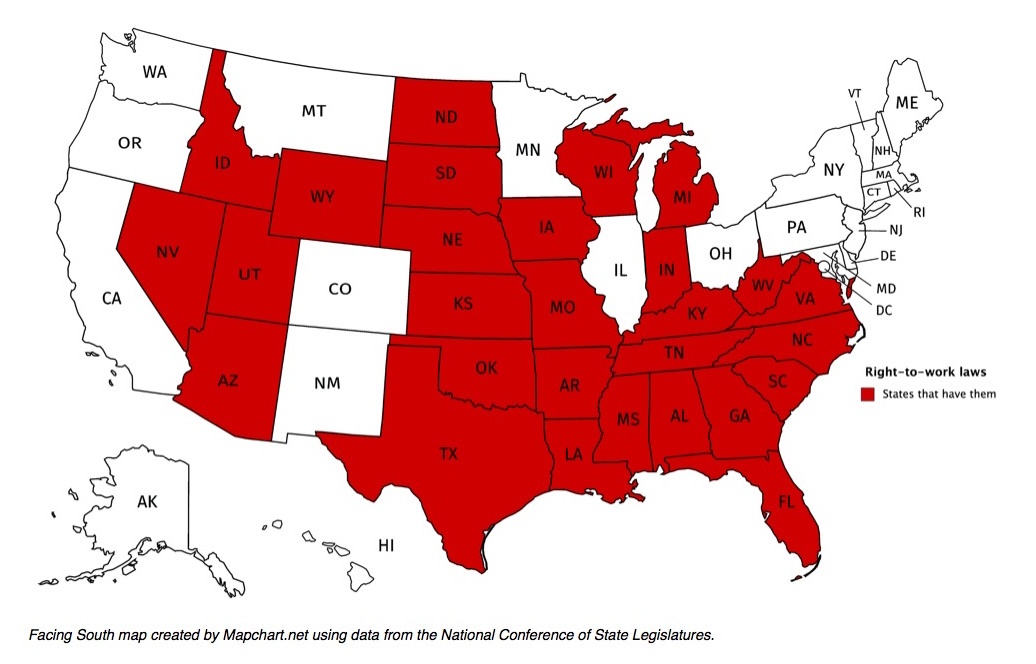INSTITUTE INDEX: The precarious state of labor in the South

With the addition of Kentucky this year, percent of Southern states with "right-to-work" laws, which allow employees to receive union benefits without belonging to one: 100
Number of workers belonging to unions in Southern states: 2.2 million
Number of Southern workers represented by unions who aren't members: 559,000
On average, percent more that union workers earn than their non-union counterparts: 13.2
Percent that economic productivity rose in the U.S. between 1979 and 2015: 63.8
Percent that wages of typical U.S. worker rose during that period: 9.9
Percent by which income grew for the top 1 percent of U.S. wage earners during that period: 190
Year that the federal minimum wage was last increased, to $7.25 an hour: 2009
Due to inflation, percent by which the purchasing power of the $7.25 minimum wage has decreased since 2009: 12
Of the five states that don't have a minimum wage law and instead rely on the federal standard , number that are in the South: 5
Percent of Southern states where 40 percent or more of workers make less than $15 an hour: 85
Nationally, median weekly earnings for men: $915
For women: $749
For black women: $641
For Latinas: $586
Of the 13 Southern states, number that have passed laws preventing local governments from increasing the minimum wage beyond the state level: 11
Number of Southern states that have passed laws preventing localities from passing measures for paid family sick leave: 10
(Click on figure to go to source.)
Tags
Chris Kromm
Chris Kromm is executive director of the Institute for Southern Studies and publisher of the Institute's online magazine, Facing South.
